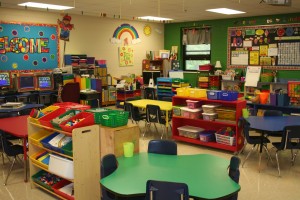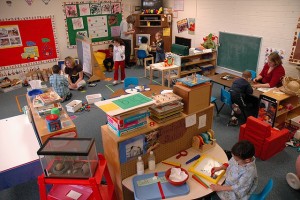When discussion started about flexible learning spaces it was an idea to address some of the issues around differentiation and also modes of teaching across teams or cohorts. There is plenty of research and exciting ideas about flexible learning spaces and I know I have shared some but I thought I would share some more from different perspectives. I am happy to trial it where you might think everyone is ready. I don’t want to just jump at something because it is a bit of a fad…the latest trick from your latest Principal 🙂
Let’s have a look at some research:
A growing body of educational research has indicated that we have reached the limits of educational reform with current strategies (Dumont and Istance 2010; Allegre and Ferrer 2010; Fullan 2005). Learning theory now focuses on the significance of the relational. The connections between learning and positive social interactions with learners and teachers (Hattie 2003; Aten Lee 2003, 2006), requires a broader conceptualisation of the notion of ‘learning environment’.
http://www.learningspaces.edu.au/docs/learningspaces-final-report.pdf
Designing for Autism: Some spatial considerations
Promoting flexibility and spatial diversity appears to be an appropriate solution, but how much flexibility and diversity is too much? Allen Abend says, “flexibility…while good in concept often results in generic, single-space classrooms with uniform ceiling heights…While such “flexible” spaces may accommodate many functions, they do not serve any one function well.” For example, upon occupying Netley the staff has said the high level of flexibility “contributes to a lack of order in the teaching environment.” Additionally, individuals with autism often exhibit a strong aversion to change. If the environment is too flexible an individual might live in constant fear that the environment will suddenly be changed.
Lastly, because individuals with autism often struggle with executive functioning, transitioning from one activity or environment to another could be made more difficult in spatially diverse environments. Aitken Turnbull Architects tackled this issue by creating threshold spaces or ‘lay-bys’ between each small six-student classroom and the potentially busy and large circulation space at the New Struan Centre for Autism. Inside each small classroom the scale is broken down again to include a small one-on-one room. It is hoped that this progression of scale will aid in transitioning from one space to the next.
http://www.archdaily.com/179359/designing-for-autism-spatial-considerations
An essential question to consider when designing learning spaces is what type of learning do you value and want to encourage?
21st century learning encourages the use of a variety of teaching methods to meet the individual needs of students and the type of teaching and learning occurring at any one time.
What spaces and resources will you need to do the following:
• Social and collaborative learning?
• Integrated curriculum?
• Student-directed/ teacher-directed learning?
• Independent learning?
• Project work?
• Direct instruction?
Flexible or open learning spaces are hard work. It is a challenge for teachers to adapt their practices, it is a challenge for students to adapt their behaviour. The benefits are unparalleled though, and can be translated back into any learning space.
Teachers working in teams is a significant benefit that arises from teaching in an open learning space. Teachers have the opportunity to learn from others in the following ways:
- simply by observing excellent practice
- being motivated by a great idea
- if one or two teachers have developed a unit which is online, all aspects of a great lesson can be online and available not only to students, but also to teachers.
- behavioural expectations can be set up for an entire group of students, teachers with different abilities to manage student relationships (behaviour) are supported by the development of a culture that is greater than the individual class culture they could have produced.
- The notion of the classroom teacher becomes quite fluid – any teacher can take any class and still produce positive learning outcomes.
- Experts and Special Needs teachers can enter the learning space and not be a distraction to students.
- Special needs teachers can work with groups of students from a few classes and increase their influence
- Special Needs teachers can work not only with students, but also with teachers. Teachers who typically remain content experts can transform into facilitators as they learn to communicate in ways that are developmentally appropriate.
Teachers working in teams provide a richness of experience for students and for each other.



